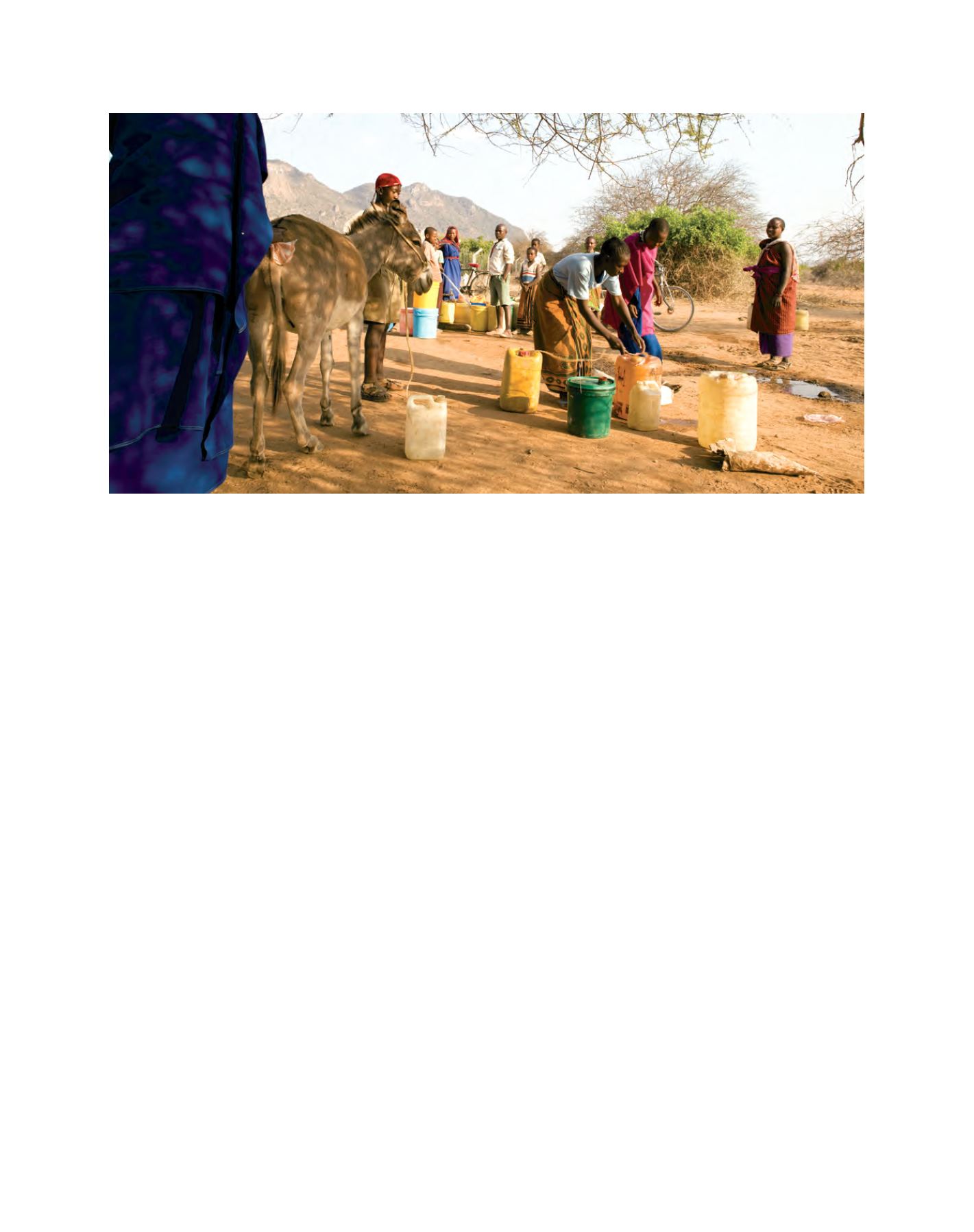

[
] 256
A
daptation
and
M
itigation
S
trategies
In addition to the direct benefits for adaptation,
ecosystem management also provides significant social,
economic and environmental co-benefits. For example,
the restoration of mangrove systems provides shoreline
protection from storm surges, but also supports fisheries-
based livelihoods through increased productivity due to
the provision of habitat for fish, and provides mitigation
benefits through carbon sequestration.
Ecosystem-based adaptation is the strategy already
adopted by many local communities to adapt to the
impacts of climate change – often because there are no
other options than ecosystem management for natural
resource dependent communities. Due to its availabil-
ity, local practice and cost-effectiveness, this approach
to adaptation is often more accessible to the rural poor
than actions based on infrastructure and engineering.
Ecosystem-based adaptation can also support indigenous
peoples by harnessing traditional knowledge on natural
resource management as well as incorporating gender-
specific needs in relation to natural resources.
Ecosystem-based adaptation builds on existing lessons
learned from natural resource management and is deliv-
ered through adaptive management, supporting adaptive
management options by facilitating and accelerating learn-
ing, increasing social and economic resilience to climate
change. The approach is consistent with the precautionary
approach and can often contribute to climate change miti-
gation, lowering the risk of ‘mal-adaptation’.
An improvement of data and information availability on
the impacts of climate change at the appropriate scale, and
through appropriatemeans will help to realize the consider-
able potential to improve the management of ecosystems to
support the most vulnerable communities to better adapt to
the impacts of climate change now and in the future.
this vulnerability, and backed by a national water policy based on
the principles of Integrated Water Resource Management, efforts are
underway to implement ‘environmental flows’. This is an ecosystem-
based method for allocating water within the limits of availability,
based on negotiation among stakeholders of allocations to different
uses of water and to sustaining ecosystem services.
3
Implementation entails developing and coordinating decision-making
over water allocation at local to basin scales. Institutional strengthening is
thus key, as a means of enabling diverse stakeholders to participate in the
discovery of options, in learning and in joint action. Ideally, authorities
enlist representatives of competing water users – farmers, hydropower,
fishers, residents and ecosystems alike – to help decide how to allocate
water. Combining a local sense of who needs what, when andwhere with
scientific data on how much water is available now and might be avail-
able under climate change scenarios, the collaborators are piloting a new,
and flexible, approach to informed decision-making. They are learning to
allocate water within the limits of the river’s flow, including to ecosystems
in the basin that store water, regulate flows and support livelihoods.
Allocation of water to sustain natural infrastructure, such as wetlands
and estuary habitats, and adaptive governance provide capacity to deal
with uncertain future events. Better water governance and best practices
will reduce pressure on ecosystems and start to make communities and
the economy in the Pangani river basin less vulnerable to the impacts of
climate change.
The benefits of ecosystem-based adaptation
Ecosystem-based adaptation can provide a cost-effective means
to build adaptive capacity. For example, ecosystems can be
cost-effective natural buffers to coastal areas. In Indonesia, the
coastal protection functions of coral reefs have been estimated
at: USD829/km in areas of agricultural production; USD50,000
in areas of high population density (based on cost of replacing
housing and roads) and USD1 million in areas of tourism (cost
of maintaining sandy beaches).
In Tanzania, better water governance and practices makes communities less vulnerable to climate change
Image: IUCN Water Programme/Taco Anema
















